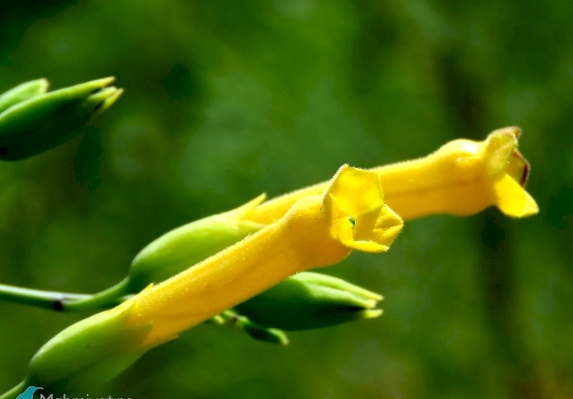Wild Tobacco
© All rights reserved by www.mahmiyat.ps
Nicotiana glauca, commonly referred to as wild tobacco which belongs to the Solanaceae family in the Solanales order. It is a small tree that stands about 5 m tall. Leaf arrangement is alternate (one leaf per node). Leaves are bluish to gray green in color with that powdery coating, (2.5-10.2 cm) long, pointed, and elliptic to oval shaped. leaf type is entire and leaf margin is smooth. The plant gets its name from the color of its leaves, stemming from the Greek word glauca meaning bluish-gray. Flowers are yellow, tubular, (3.2-5 cm) long, and found in clusters at the end of the branches. Flowers bloom from early spring to late summer. The flowers are hermaphrodite (have both male and female organs) and are pollinated by Lepidoptera. The flowers attract the Palestine sunbirds (Nectarinia Osea), important nectar consumers and pollinators of the Nicotiana glauca. Fruits are egg-shaped, (7-10 mm) long, and has two compartments. This plant reproduces by seed. Seeds are very small and dark brown in color.
Tree tobacco is native to South America but it is now widespread as an introduced species on other continents including the Mediterranean and Palestine as well.
This tree is not spiny nor succulent and in in terms of salt resistance it is glycophyte and it is obligate synanthropic.
The chorotype is Plurireginalbor-trop. Nicotiana glauca grows in a wide variety of open and disturbed habitats including roadsides and lakeshores.
All parts of Nicotiana glauca are extremely poisonous. The ingestion of the leaves can be fatal. It is being investigated for use as a biofuel. Some people use this plant as ornamental purposes in their gardens.
Cool Facts: Navajo Indians smoked this plant for ritual purposes and in places like Arizona, California, Texas, Mexico, Hawaiian Islands, Australia, and in the Mediterranean.
Distribution of the plant in Palestine: Mediterranean woodlands, semi-steppe shrublands, deserts, and it can grow every where .
Other names: tree tobacco, mustard tree, tobacco bush.
IUCN red list status: not evaluated
Local status: least concern

